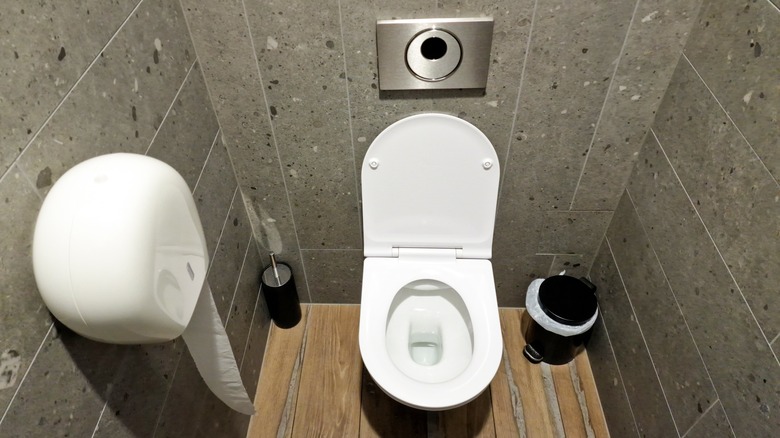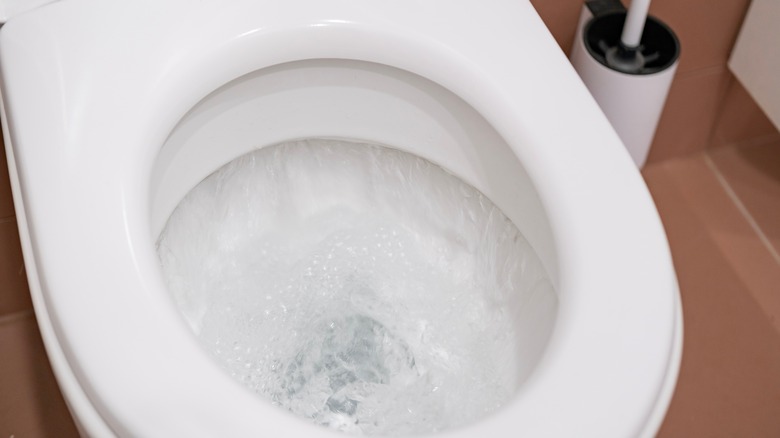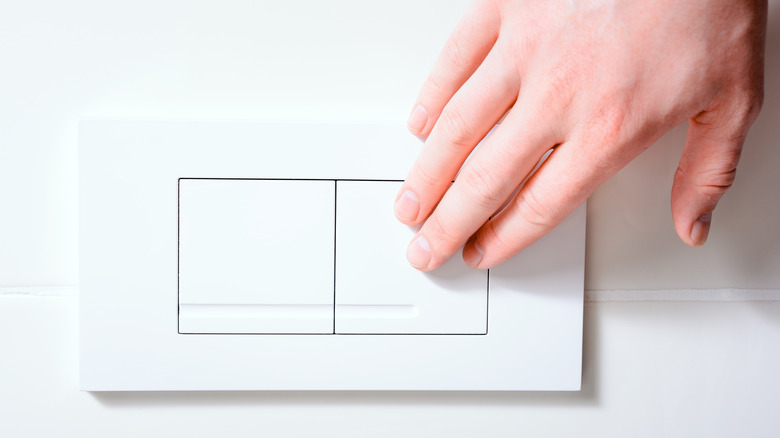Is An Automatic Flush Toilet Bad For The Environment? Here's What You Need To Know
Since the 1990s, automatic flush toilets have become ubiquitous in virtually every public restroom — you'll see them at airports, rest areas, shopping malls, large office buildings, you name it. Not only are these considered more hygienic and accessible than their traditional push-handle counterparts due to the use of sensors, but they're more convenient for the facilities that have to maintain them as they are guaranteed to flush regularly. Yet the convenience and cleanliness of automatic flush toilets also pose huge downsides.
If you've encountered an automatic toilet and noticed that it flushes multiple times before and after you even use it, you're certainly not alone. This is perhaps the biggest issue with these fixtures, as all the unnecessary expulsion ultimately means a lot of wasted water. While automatic flush toilets have evolved to use less water, as with the rest of the market, this is still a major con against the potential benefits of hygiene and convenience. If you're concerned about the negative impacts to the environment associated with these designs, you can still take steps to ensure the ones in your home are environmentally friendly.
Why automatic flush toilets are bad for the environment
Before considering a touchless toilet in your home bathroom, it's important to weigh the pros and cons. While cleaner and more convenient, as we mentioned before, automatic flush toilets are notorious for being bad for environment due to excess water consumption. In fact, if you've ever heard a series of toilets flush in public restrooms with no one in the stalls, this is a prime example of how much water these models can waste. (This is also why they're nicknamed "phantom-flush" toilets.)
While more research is needed to determine exactly how much water automatic flushing toilets waste, one of the first studies of its kind in 2010 by the California Energy Commission discovered that newly-installed models in an office building used nearly double the amount of water as previous manual versions. This was true for faucets and urinals, too. "We consider auto valve (fixtures) highly wasteful water-wise, because almost every valve that is designed to sense body movement is going to flush multiple times. ... They are very hygienic, and that is great," John Koeller, one of the study's authors, told the San Diego Union-Tribune in 2015. "The sacrifice is water waste."
What you can do instead
Unless you own a shopping center or corporate office building and make the decisions regarding toilet installation in such spaces, there's probably not a whole lot you can do to avoid automatic flush toilets in public areas. However, there are ways you can help mitigate excess water losses via models you install in your home. The best bet is to forego automatic flush toilets whenever you can. If you do need this type of fixture for accessibility concerns, make sure that the brand uses the least amount of water possible.
Another alternative is to invest in dual flushing toilets. According to the U.S. Environmental Protection Agency (EPA), the average home toilet now uses 1.28 gallons of water per flush, which is less than the 1.6 gallons mandated by the federal government. However, a dual-flush toilet can save even more water, as it uses less for liquid waste, and more for solid waste. The EPA also advocates for buying toilets with the WaterSense seal of approval, which can save you an average of $170 in annual water costs along with 13,000 gallons of water per year.


